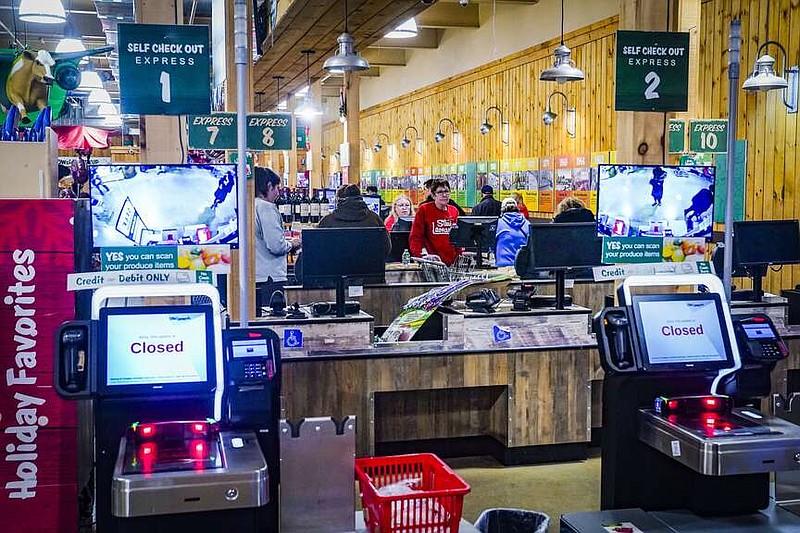Walmart shoppers were introduced to self-checkout several years ago, and its popularity grew during the pandemic as customers often chose contactless checkout as a safer option.
Now, though, after some retailers commented in recent months on problems with "shrink," which includes theft, they're cutting back on self-checkout in what retail experts say is an effort to stem the losses.
The retailers themselves, however, generally deny that's the reason for the cutbacks.
Target Corp., for instance, began Monday to limit self-checkout to 10 or fewer items at most of its nearly 2,000 stores after testing the change in about 200 locations last fall.
The Minneapolis-based big-box chain said Thursday that the change "was guided by this guest feedback ... to make our checkout experience even more enjoyable."
Dollar General Chief Executive Todd Vasos said in the company's earnings call Thursday that it's making three changes to its checkout strategy this year to "enhance the overall customer and associate experience."
First, it will convert at least some, if not all, of the self-checkout stations in about 9,000 of its 14,000 stores to a new option it calls employee-assisted checkout.
"This is expected to drive traffic first to our staffed registers, with assisted checkout options available as second or third options to reduce lines during high-volume times," Vasos said.
Its second change will limit self-checkout to five items or less.
Finally, Vasos said that by July, it will cut self-checkout completely from about 300 of its stores with the highest shrink.
Walmart spokesperson Kelsey Bohl said the Bentonville-based retailer uses store traffic flow to determine how best to use its checkout options to serve shoppers.
This isn't a new process, she said.
Store managers adjust the use of staffed checkouts and self-checkouts depending on how heavy customer traffic may be at any given time during the day, Bohl said.
"For example, a store might start or end the day with staffed checkouts," Bohl said. "As the number of shoppers and associate staffing increases, these stores open self-checkout registers to manage the increased customer flow."
Also, during the busier times, she said, "some stores are designating select self-checkout stations for Walmart Plus customers who use the Scan and Go service and Spark drivers for quicker access and delivery services."
"This decision is intended to better manage checkout availability," Bohl said.
The remodels of more than 1,700 Walmart and Neighborhood Market stores across the country include both staffed and self-checkout lanes, the company said.
The store redesigns and upgrades are part of a $9 billion rolling investment that the company started in 2022 and plans to continue through this year, Walmart said.
Ken Perkins, president of research firm Retail Metrics, said "there's no question" that retailers are experiencing more shrink at self-checkout than at traditional checkout.
"Unfortunately, that is taking place across the country and across retailers," Perkins said.
"They've invested a lot of money in these self-checkout lanes, so I don't think they want to close them if they don't have to," Perkins said. "They could monitor them better, though."
Perkins said overall, self-checkout has been positive for retailers.
"But it's probably been the weakest link [for customers] to walk out without paying for something," he said.
Emerson Delgado, senior consulting manager at McMillanDoolittle, said recent studies estimate that self-checkout "greatly increases the cost of shrink from each transaction, through a combination of intentional and unintentional missed scans by untrained customers."
A large proportion of shrink, however, "comes from supply chain or back-of-house issues," Delgado said, "not customer mistakes or shoplifting."
Self-checkout gives retailers a way to adjust store labor based on traffic, Delgado said.
A single employee can cover about six or more checkout machines as opposed to the 1:1 ratio of employee checkout.
Delgado said that rough estimates based on one study indicate that an employee would "have to be able to capably cover about 16 self-checkout machines" to make having self-checkout worthwhile.
Delgado added that shrink has as much to do with a company's reputation as its finances.
"Imagine the response in an investor call if a retailer said labor or freight costs went up 10% versus the response if a retailer said shrink went up 10%," he said.
"It just has a much worse connotation," he said.
